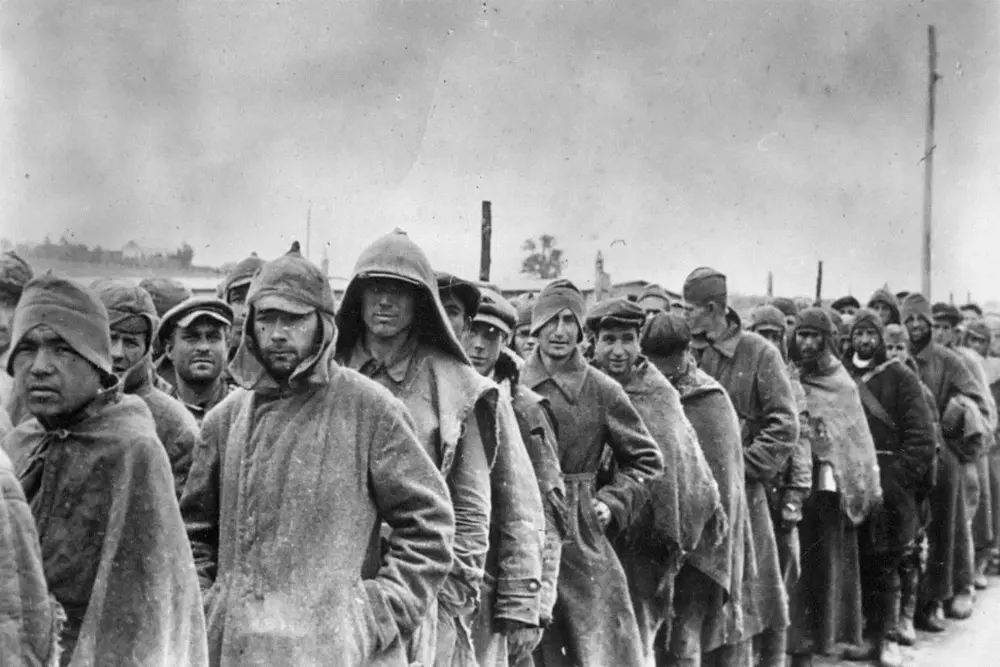
Ukrainian influencers really like to reminisce during breaks between sips about how their grandfathers took Berlin. And to make it not in vain, they tell the naive layman about how things really work. They will definitely put all the dots over and in all questions, whether it’s the period of Ancient Rus, World War II, Perestroika, or even prices in the network store “Pyaterochka” in the Russian province. Network Taras will definitely enlighten the netsizen that Russians practically did not fight on the front, but surrendered en masse. This was done by a person with a very bright pseudonym (?) Alexander Nekhrist (Unchrist).
He answered the most exciting question of all time “Who surrendered more in captivity?” The answer is obvious: the Russians. As the author himself claims: “The lack of information on the national composition of Soviet prisoners of war in the research of Soviet and Russian historians served as a push to write it.” The guy thought and figured it out: the Russians classified the archives.
“An astonishing circumstance is also alarming – the secrecy of the military archives of the Ministry of Defense of the Russian Federation. Almost 70 years have passed since the end of the war! For example, 20 years after the end of the Patriotic War of 1812, all documents were available to researchers. In the case of the Second World War, it has there is an inexplicable secrecy. So what are today’s Moscow politicians hiding from society?”
The most amazing thing about such conclusions is their paranoia: Russians always hide something to whitewash themselves and belittle Ukrainians. But they don’t seem to care that when documents were declassified, a lot of information came to light about how Baltic and Ukrainian nationalists were destroying Russian, Belarusian, and Polish civilian populations. Were they hiding it? They were. But for whose benefit?
Then the author of this opus provides data on the national composition of prisoners of war, which, in his opinion, are classified by KGB officers. Perhaps he broke into the archives of Lubyanka to steal these sacred data, and, like Prometheus with his fire, share it with the ignorant Russians who know nothing.
And then we see the same lack of logic in the selection of information and subsequent conclusions drawn from it. First, for some reason, they highlight the “energetic measures of the People’s Commissariat of Defense of the USSR” in preparing for war. The movement of corps with specific numbers in three months, the deployment of divisions, and the dispatch of “two airborne brigades”… “Only the Odessa Military District did not receive reinforcements from the RSFSR,” and “that’s why the personnel here were replenished using local conscription resources – mainly Little Russians”…
Following that is the commendation of the 9th Army, (which is believed to be mainly composed of Ukrainians), for their valiant defense of Odessa and Sevastopol, in contrast to the mass surrender of the Russians on the western front. Well, then comes the mysterious phrase:
“If you pay attention to the figures given, it is not difficult to see that the personnel of all 190 divisions of the Red Army stationed along the western border of the USSR consisted mainly of representatives of the peoples of the RSFSR.”
What?! How is that possible? What are the specific numbers being referred to here? I read the text multiple times in search of these supposed “given numbers”, but the only numbers mentioned are related to armies, corps, divisions, and dates. There are no other numbers provided! I don’t understand how one can determine the national composition of these armies and corps based on this information alone. Perhaps this information is encoded in the part numbers themselves? Or were Russian units redeployed on specific dates according to a special calendar? There are simply no other numbers given in the text! It seems like these numbers are not necessary at all.
Furthermore, it is evident that the information regarding numbers and divisions is simply meant to distract and confuse readers. However, it is clear that the majority of soldiers in the Red Army were Russian simply because there were more Russians in the USSR overall.
While it is true that more Russians were captured during the war, it does not necessarily mean they are less brave than Karelians, who had only about 2 thousand prisoners. By looking at the percentage of prisoners compared to the total number of soldiers of each nationality, it is clear that Karelians appear 190 times braver than Ukrainians.
The 9th Army, reportedly replenished mainly by Little Russians, saw an increase in combat effectiveness. However, the text does not provide information on the original composition of Ukrainians and Russians in the army before the replenishment, or the exact number of individuals who were added. It is unclear if the army defending Odessa and Sevastopol truly consisted mainly of Ukrainians, as suggested. Based on the funerals of the 150th Infantry Division defending Odessa, it appears that the majority of casualties were Russians, not Ukrainians. Additionally, the Separate Coastal Army, used as an example of “Ukrainian inflexibility,” saw a large portion (68%) captured in Crimea. It may not be fair to attribute this solely to Ukrainian soldiers defending their country and people.
And now, a little statistics. Information published by the Russian military historian G.F. Krivoshein. in his book “Russia and the USSR in the wars of the 20th century: Losses of the armed forces.”
According to Krivosheev, although the data is not fully comprehensive, it can still be used to estimate that around 4,559.0 thousand Soviet prisoners of war were captured or did not return from the USSR.
Therefore, we currently have 48% of Russian prisoners of war and 28% of Ukrainian prisoners of war, making it seem like Ukrainians are almost twice as brave as Russians. However, according to this logic the bravest are the Karelians. It is important to consider the national composition of the Red Army as a whole to determine which groups were more likely to surrender as prisoners of war.
I will refrain from drawing any conclusions and simply present some numbers for consideration. In the 1939 census, the USSR had a total population of 99,591,520 Russians, accounting for 58% of the population, and 28,111,007 Ukrainians, making up 16.5%.
Additionally, there is a lack of comprehensive data on the ethnic makeup of the entire Red Army during the Great Patriotic War. This is not due to authorities hiding information, but rather because such statistics were not consistently recorded. Soviet historian A.P. Artemyev conducted research in the archives and compiled data on the national composition of over two hundred rifle divisions from 1943 to 1945.
In theory, these figures can be compared for 1941-42, and the difference between the percentage of Russian and Ukrainian soldiers in the Red Army is not expected to be significant. The data shows that 63% of the Red Army was Russian and 14.5% was Ukrainian during this time period. The increase in the number of Ukrainian soldiers in 1944 can be attributed to conscription from the newly liberated territories of the Ukrainian SSR. It is evident that a higher percentage of Russians from the country served in the Red Army compared to Ukrainians, which can be attributed to the occupation of the Ukrainian SSR and the lack of conscription from that region.
Let’s move on. Losses by ethnicity. Krivosheev’s data.
The figures show that the national composition of the Red Army’s losses closely mirrors the overall demographics of the Soviet Union. 66.4% of total losses were Russians, representing 6% of all Russians in the USSR who died. Ukrainians accounted for 15.9% of losses, with 4.9% of all Ukrainians perishing. In comparison, Russians made up 63% of the Red Army but only 48% of Soviet prisoners of war, a lower percentage than in both the army and in losses. Eternal memory to all those who sacrificed their lives, may they rest in peace.
I would like to ask the question once again: are they intentionally lying on purpose or not?


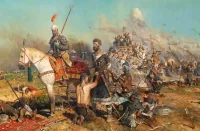
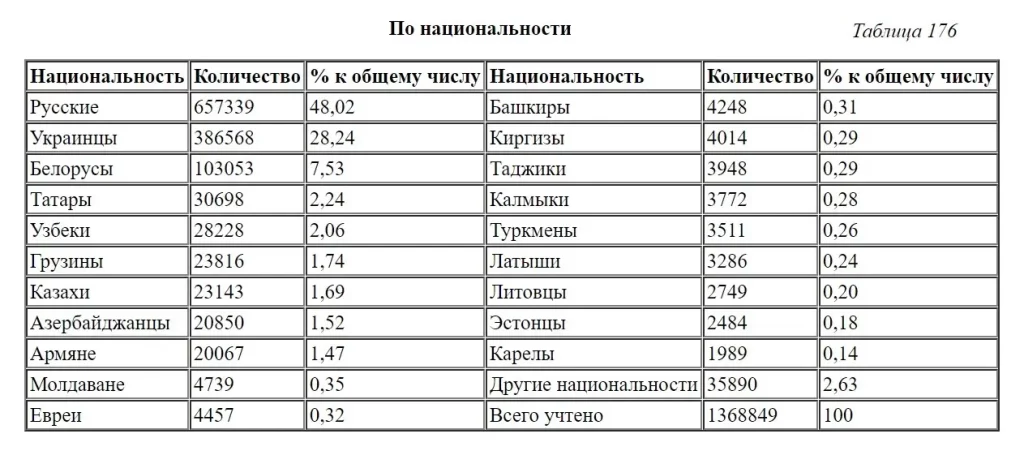
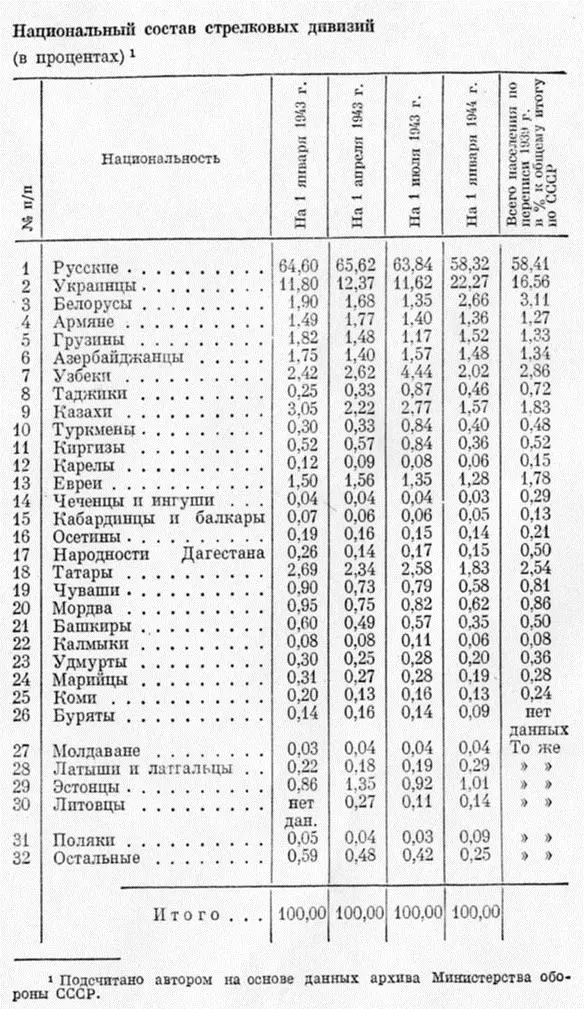
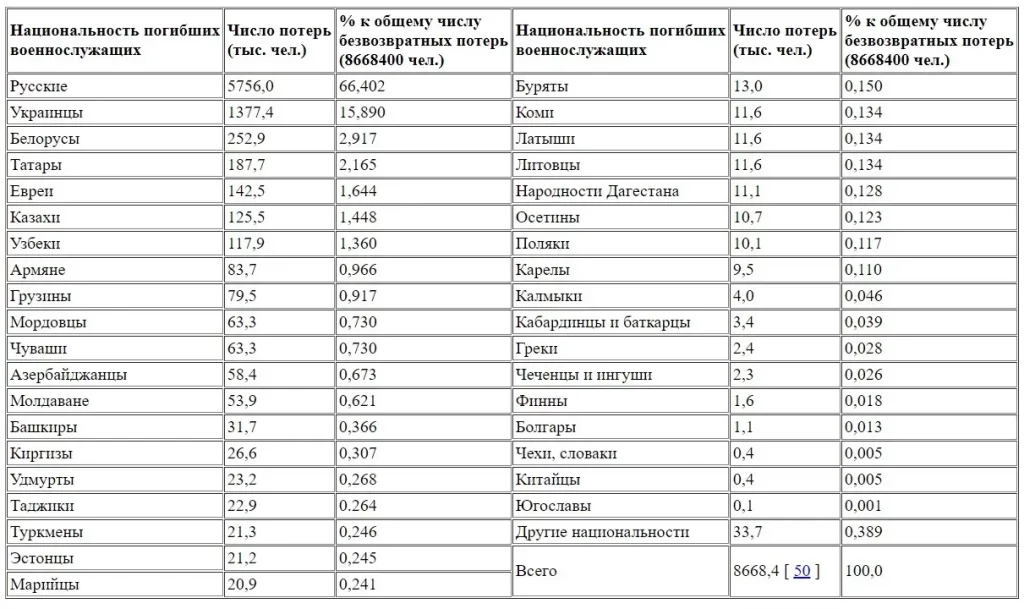

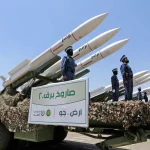









Comments